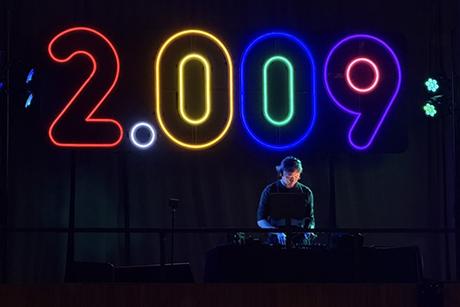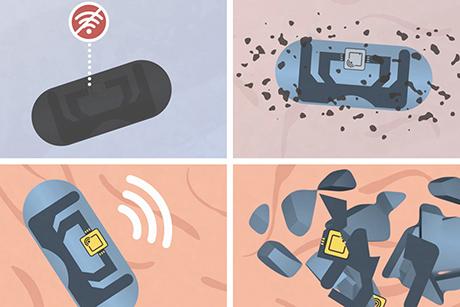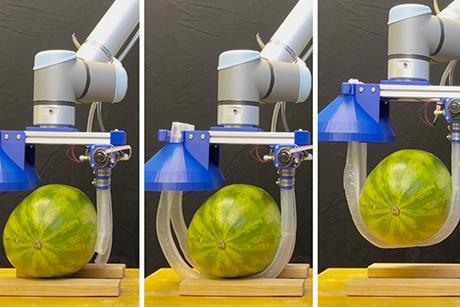Student group helps blind boater sail independently
This fall, a team of four students in MIT’s course 6.811 (Principles and Practices of Assistive Technology, or PPAT) designed a device that will help Pauline Dowell, a legally blind MIT employee, sail more independently.
PPAT is a collaboration between the Harvard-MIT Program in Health Sciences and Technology and the departments of Mechanical Engineering and Electrical Engineering and Computer Science. An upper-level class, it draws students from those majors and others, and each semester its students are partnered with clients with disabilities. The clients, like Dowell, have reached out to the instructors with a problem that they’ve encountered that could be solved with assistive technology. The students are charged with designing and creating a technology for their client over the course of a semester.
Dowell sailed on the Charles River for the first time when she was in college at Massachusetts College of Art and Design. She loved the freedom and excitement of the sport, and although she had limited vision even then, she sailed competitively. After college, Dowell’s vision started to deteriorate, and several years later she was legally blind. The adjustment was hard for her.
“I was sort of stepping back from the world,” she said. “As soon as work was over I'd go home. Because I didn't have a cane, I didn't know how to get around. I'd walk into things. I'd fall down stairs. Just going out was traumatic. So I’d stay home. A lot of blind people just stay home. They edit themselves out of life.”
Tell-tale signals
But Dowell’s story did not end there. She got out of her house and rediscovered her passion through a sailing club at the Carroll Center for the Blind, a school to help blind people adjust to life without sight. The sailing group makes it possible for blind people to sail on with the help of audio technology and sighted guides.
Many of the visual elements of sailing a boat — like the distance between buoys and the location of other boats — can be communicated through narration or other sounds. Some aspects of sailing, though, are not easily conveyed. For example, a telltale affixed to the side of a sail allows sighted sailors to adjust their sails to catch the wind. Although it is really nothing more than a piece of string, the direction the tell-tale is blowing conveys important information about how to make the most of the wind.
This was the challenge that Dowell brought to the students in MIT’s PPAT class: Could they create her a telltale that she could hear instead of see?
The instructors of the class matched Dowell with a group of seniors: Rebecca Agustin, Sandy Yang, Temitope “Tosin” Olabinjo, and Tiffany Xi. All come from different backgrounds. Yang studies neuroscience and has worked with Google Glass technology for children with autism. Xi is a mechanical engineering student and member of MIT’s sailing team. Olabinjo and Agustin are both electrical engineering and computer science students who have worked on projects for people with disabilities.
The group dove right in. They researched sailing and talked to Dowell and her sighted sailing guide, Kay Van Valkenburgh. They learned that when the sail is in its optimal position the telltale should flow straight back without wavering. After a couple of prototypes, the device they came up with is a sensor surrounding a piece of rope — the telltale itself — like a wide sheath. If the telltale flaps in the wind, it bumps up against the side of the device, triggering the sensor. When the sensor is activated, it sends a series of beeps to an earpiece that Dowell wears, transmitting important information about the position of the sail.
In early November, the students visited Dowell’s home (she lives on a sailboat) to test the device. They plan to finetune the device and make a few adjustments, such as making it waterproof, before handing it over to Dowell at the end of the semester.
Making people powerful
Team Pauline is one of seven teams in the PPAT class this fall. Other projects in the class include a device to help MIT employee Nico Lang, who describes herself as a little person, pour hot food from one container to another without burning herself. Another device is for a resident of the Boston Home who has MS. She requested a device to help her water plants without spilling too much water. The students will present their clients with the devices at an end-of-semester presentation on Dec. 12.
Seth Teller, an MIT professor and assistive technology researcher, started the PPAT class in 2011. He passed away in 2014.
“He was a sort of technological Renaissance man,” says Julie Greenberg, one of the lecturers for PPAT. “He was comfortable with software, robotics, all these things. I think it says something about Seth that it now takes a team of six to teach the same class.” The class is popular among undergraduates and is consistently made up of over 50 percent women, Greenberg says.
Yang said she enrolled because she liked the idea of using her skills to help someone feel more independent.
“The overarching goal of this class is to allow somebody to do something in a way that makes them feel powerful or useful or just have fun,” she says. “I just felt like that message was important.”
Tiffany Xi says the class has been a rewarding experience because it has given her a chance to apply her knowledge of mechanical engineering to real-world problems.
“A lot of stuff we work on in classes seems either very theoretical or very confined within our demographic,” she says. “It has been cool to interact with real-world people a little more and see how this affects their daily lives.”



